ScienceOutreach
Articles and other activities done to communicate and popularizing scientific concepts to a broad audience
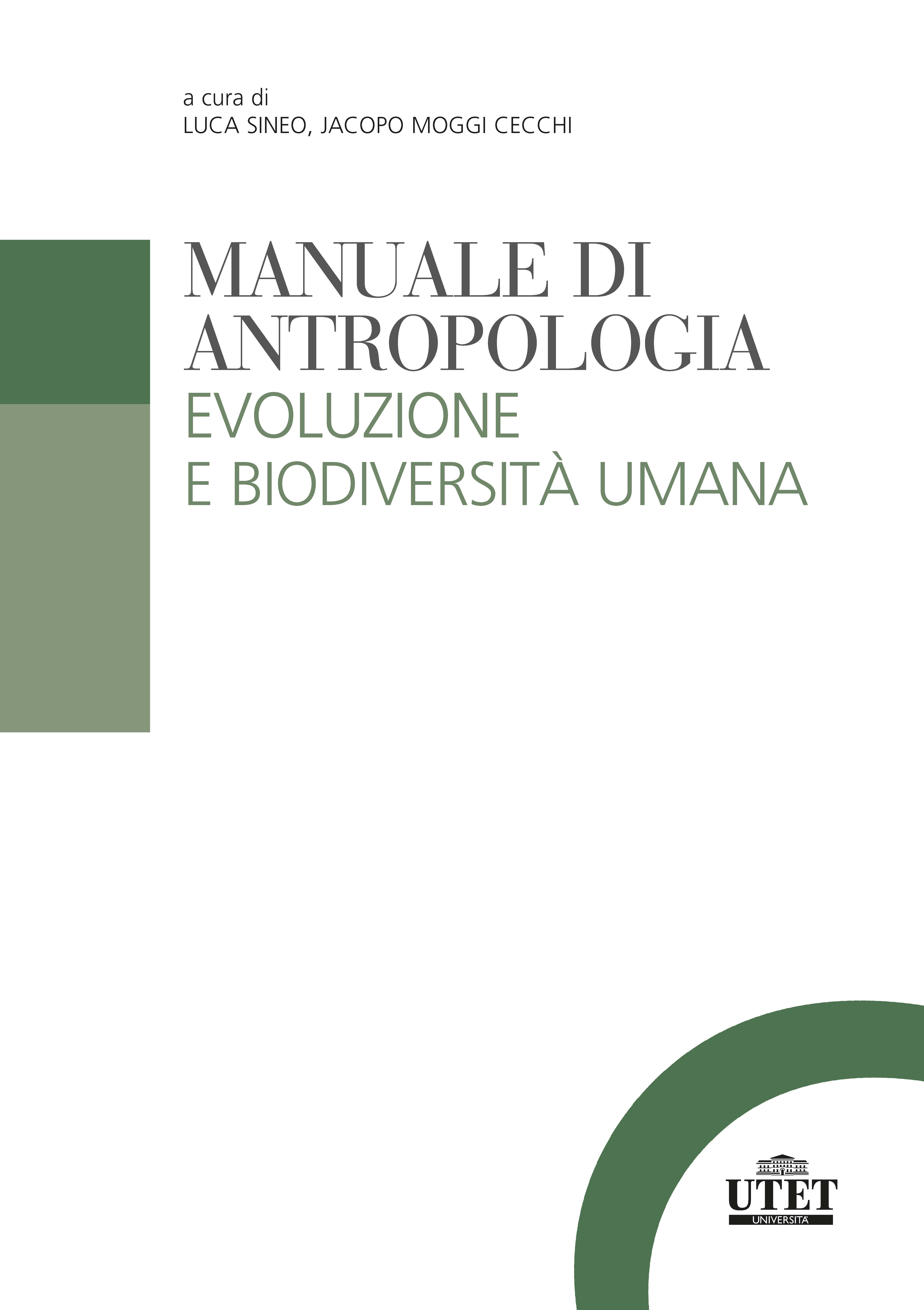
Manuale di Antropologia, Evoluzione e Biodiversita Umana
UTET Universita [ITA]
The Manual of Anthropology, Evolution and Human biodiversity is a cutting-edge manual of over 600 pages that covers a broad spectrum of advanced concepts in the field of Anthropology and Evolution. In particular, several italian renown scientists took part in writing sections of the manual, sharing their expertise. I took part in writing the section focused on human evolutionary genetics: about 10 pages explaining in a clear on concise manner the peopling of continents and human diversity (Capitolo 6.4 ‘Il popolamento dei continenti e le mappe della diversità umana’), joint work with Prof. Pagani (University of Padua).
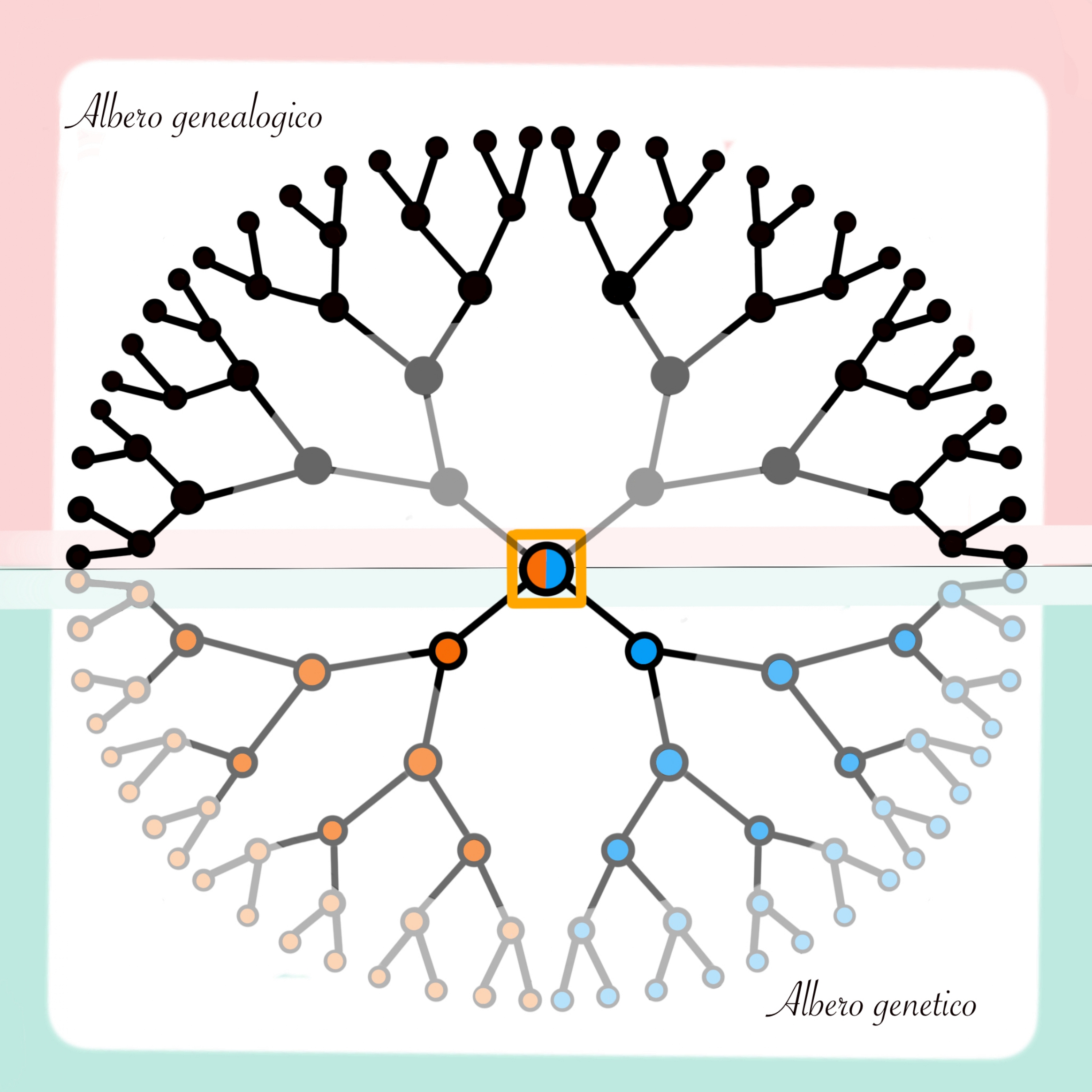
Carlomagno, mio cugino
"Rivista trimestrale. Poliedrica. Interattiva. Viandante."
If you believe that you have the most eccentric relatives in your family tree, starting tomorrow, you can easily (or more precisely, scientifically) include Charlemagne as well!
Consider your family tree: it starts with you at generation zero (0). In the previous generation (generation 1), you have your two parents. The generation before that, your four grandparents make up generation 2. Every generation we find 2^K relatives,where k is the generation number that we are considering. Let’s begin with us as the only protagonists (2^0=1), then there are our two parents (2^1 =2), and then the grandparents (2^2 =4). How many direct ancestors did we have 20 generations ago? 1,048,576. And 30 generations ago? Over a billion direct ancestors. And at Charlemagne time? To go back to the 19th century we need about 40 generations, and 2^40 ago … 1,099,511,627,776 (I dare you to read it!).
Leaving aside the logistical challenge of organizing lunch for Christmas, there’s a significant issue with this vast number of relative. In the 19th century, the world’s population was far from reaching one billion inhabitants. So, it raises a question: How is it possible that each of us had billions of relatives 1200 years ago when, in the year 1000 AD, there were only a few million inhabitants?
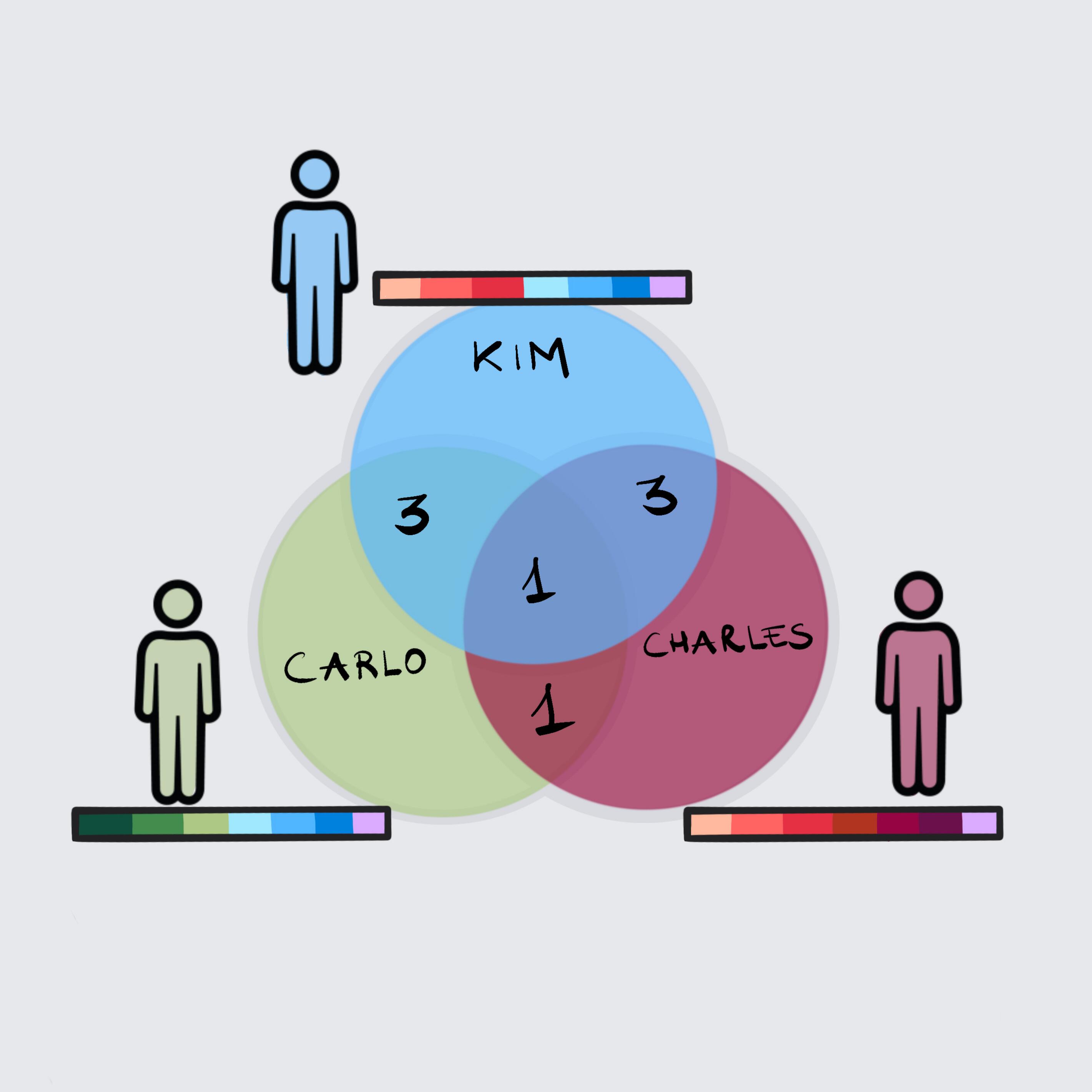
DNA is not made up of just genes. On the contrary, only 1-2% of your DNA comprises genes. Almost every one of your cells contains about two meters of thighly packed deoxyribonucleic acid. However, only a very small portion of this DNA contains the essential information for the functioning of your cells. Furthermore, a significant portion of this information is shared with other organisms. For example, 80% of mouse genes perform the same functions as ours, and we share over 96% of our genes with chimpanzees. ..Well, do you think we are so different from an onion? If you feel offended, don’t blame me; it’s all evolution’s doing, I swear! Evolution has preserved many genes because they serve essential functions. Consider how many different organisms are required to produce molecules like hemoglobin or enzymes for digesting carbohydrates. However,to compare genes, we can only find macro-differences between species. For details, we need to look at the remaining 98% of DNA, where there aren’t any genes. If genes make up only 2% of DNA, what makes up the rest?
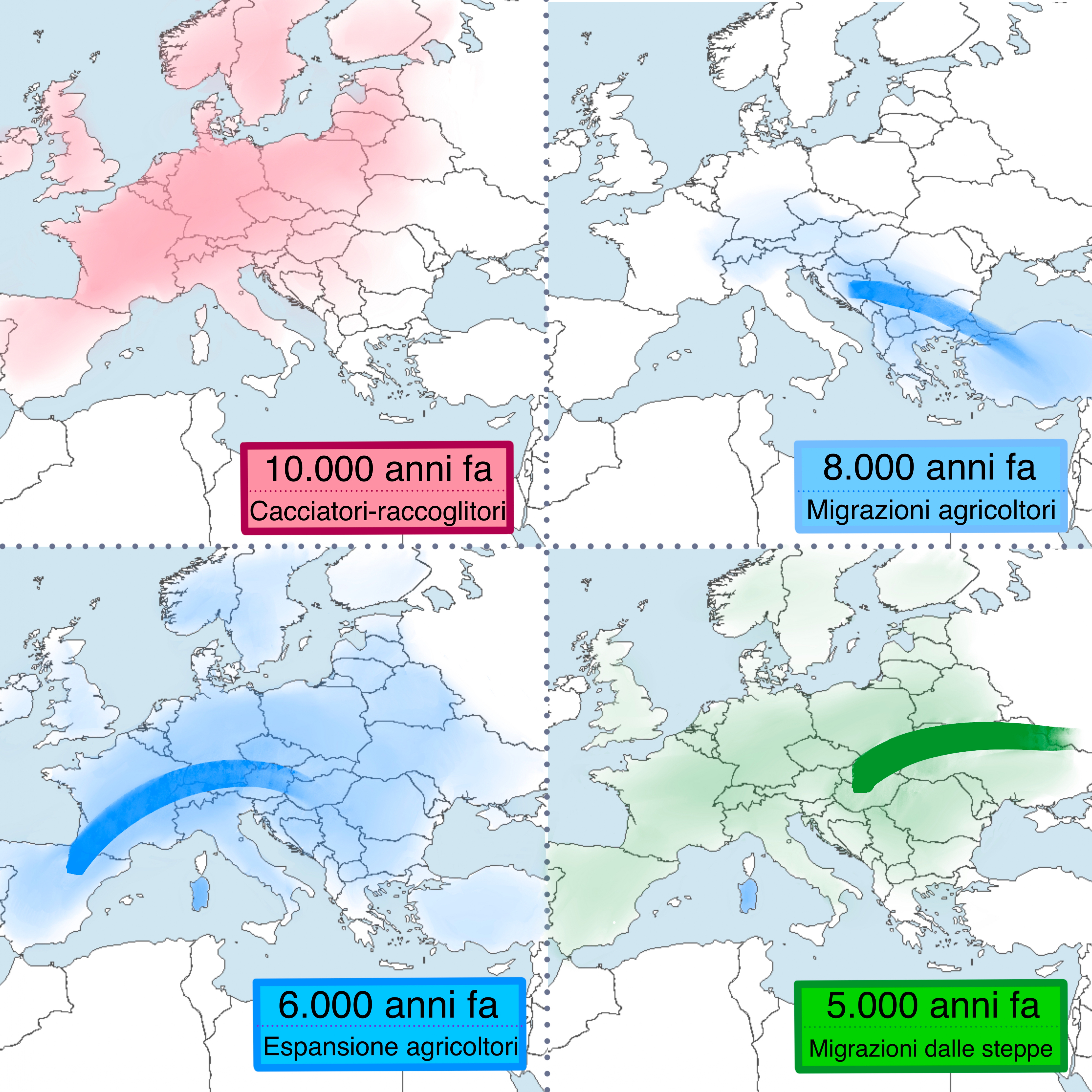
10000 anni di storia in una doppia elica
"Rivista trimestrale. Poliedrica. Interattiva. Viandante."
Almost 5,300 years ago, high in the mountains, a man of about 45 years old was hit at the back of his head, fatally, by an arrow. Covered in snow and ice, he remained hidden from most people for millennia, until, in 1991, two hikers noticed the body near the Tisenjoch pass, in the Ötztal Alps, also called Ötztal. The remains are still preserved in the Museum of Anthropology in Bolzano; this is where ‘Ötzi,’ or ‘The Iceman,’ [3] can be found. Ötzi has lived all his life in South Tyrol, yet genetically he is closely related to the Sardinians. How can it be? DNA contamination? Some distracted scientist? No, this result has perfect sense…
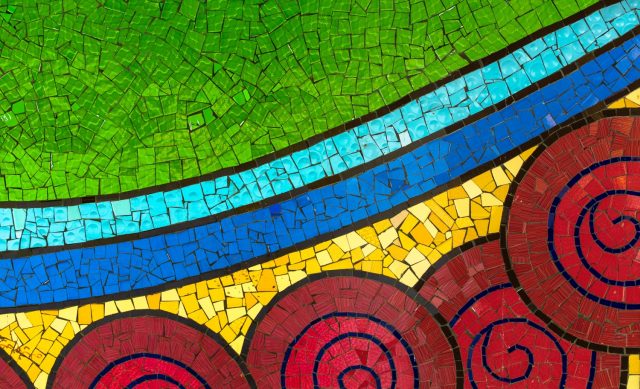
The thousands of lives you lived
University of Tartu Blog
"Official blog of the University of Tartu."
” … We all have incredible stories within our DNA, and studying them has been proven incredibly helpful. Since the advent of ancient DNA, we started to rethink our ancestors, their cultures, their ability to move and expand to other lands, their links with other communities: we, humans, have not changed that much. And if you’re not an eager traveler, or your passions are more futuristic than mine (You’re allowed – I don’t judge), I’ll tell you this: many people have been misdiagnosed of certain diseases because many genome-wide association studies, in which geneticists look for any variant or mutations that could be associated with a trait or a disease, are based on analyses of people with a “European story” (European descent), and so the results are biased toward one ancestry. The stories within us are important, for our curiosity, but also for so much more.”
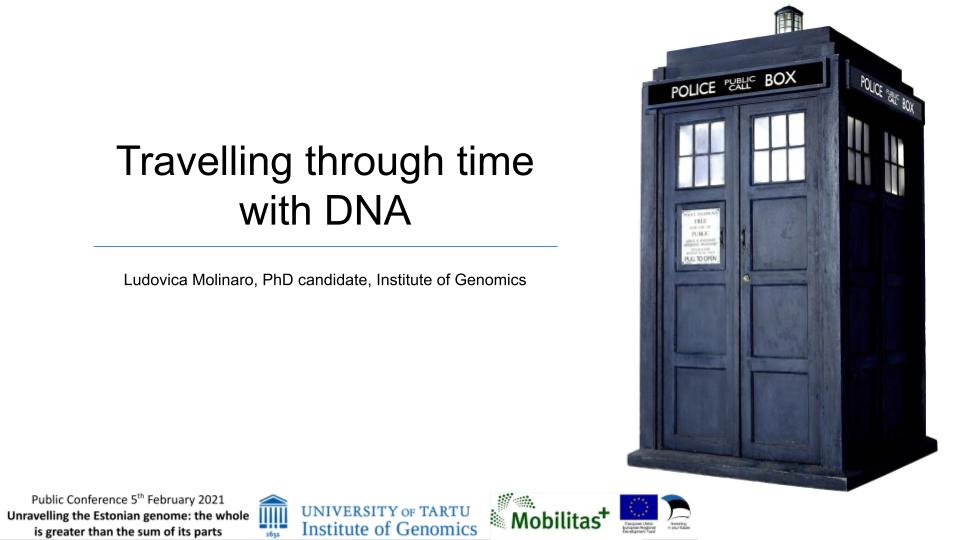
How to time travel with DNA
Webinar for the broad Estonian public to popularize our team's research
"Webinar broadcasted on channel X, and also translated in Estonian"
The webinar was organized by Prof. Pagani, to show the Estonian public all the scientific results his entire team reached by the end of the Mobilitas Pluss Grant he was awarded. I gave an introductory lecture on genetics focusing on non-conding DNA and Local Ancestry Deconvolution (both core concepts in my Doctoral research) and show the applications of the concepts explained in the research we carried on in the Modern DNA group at Institute of Genomics.